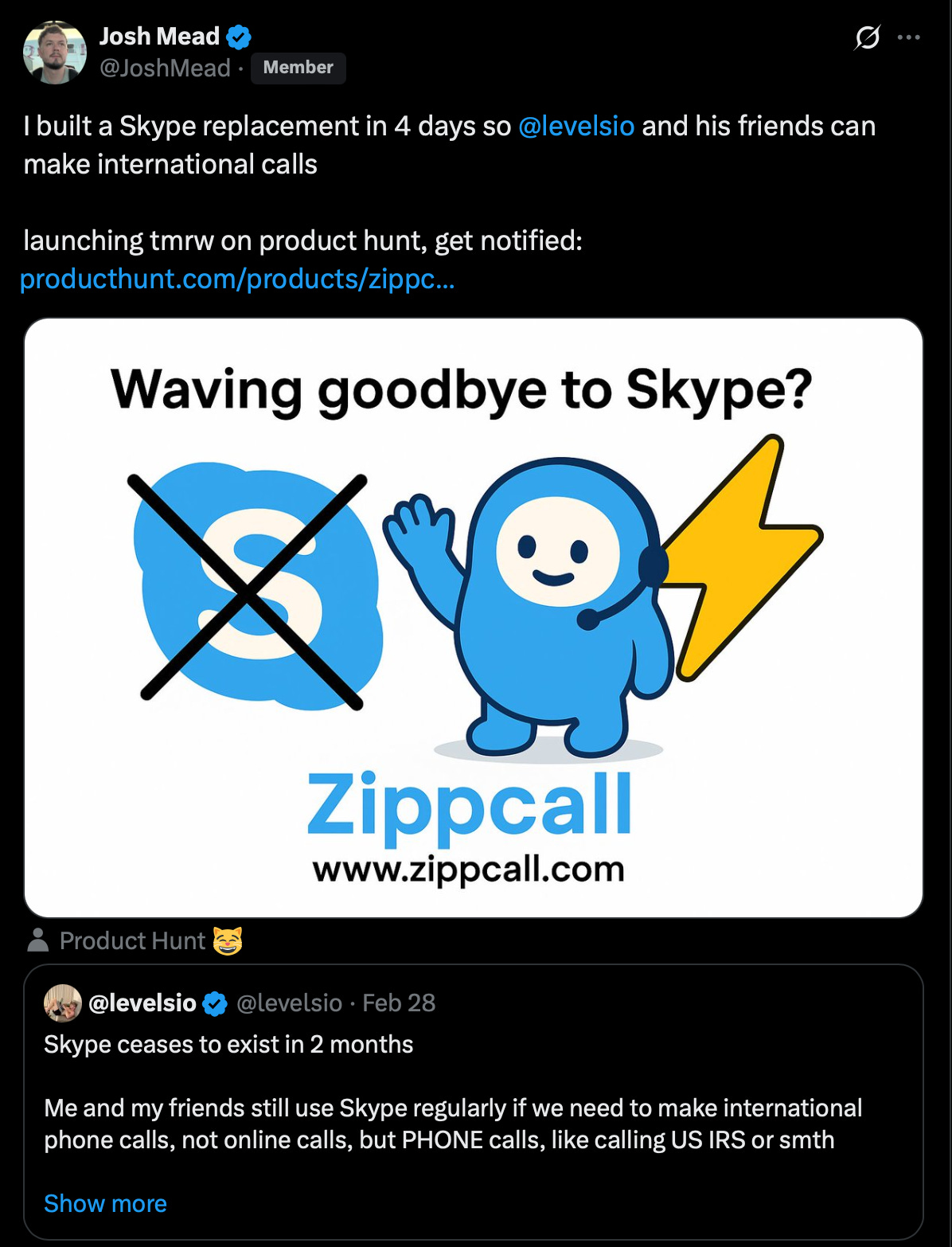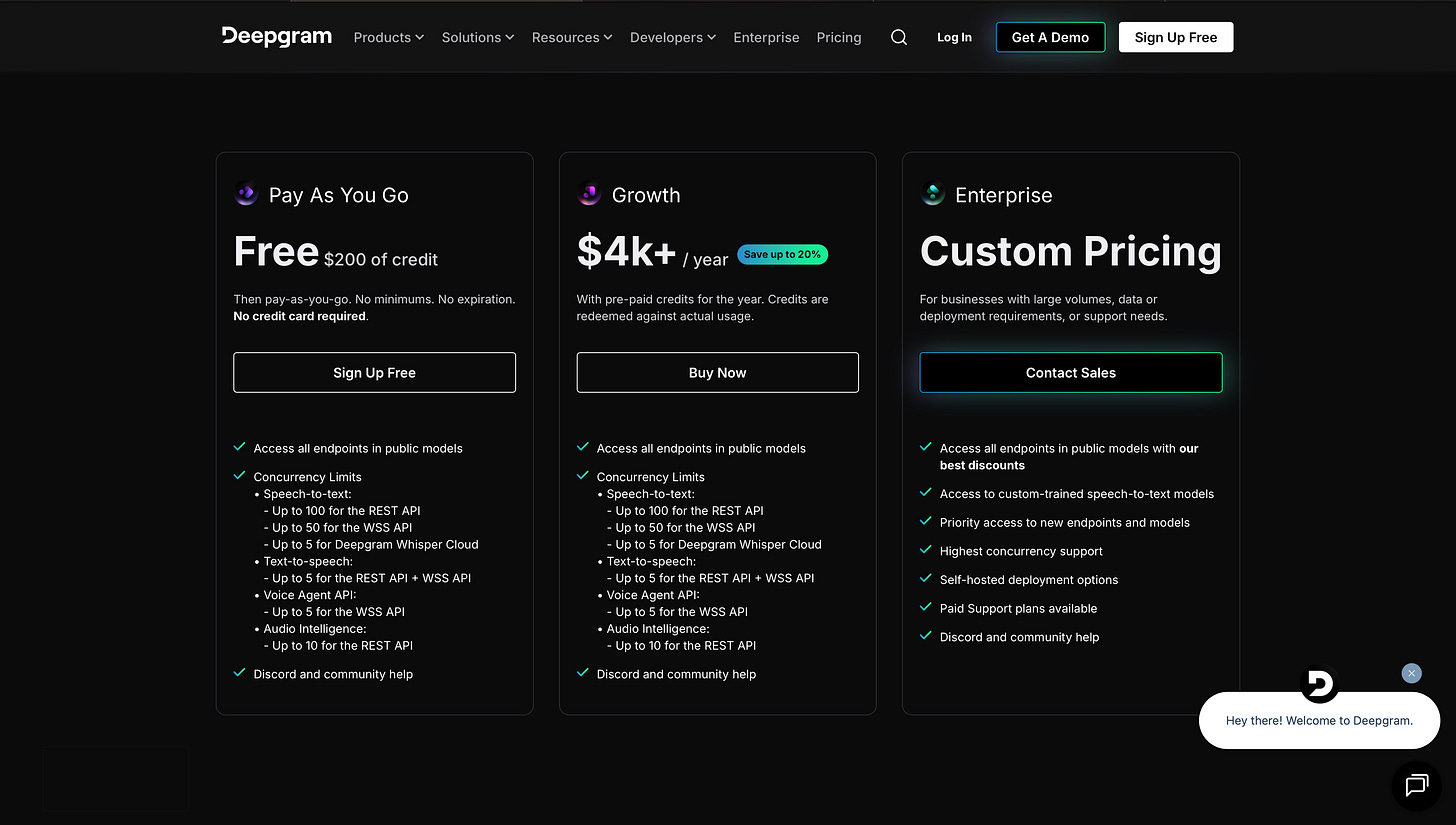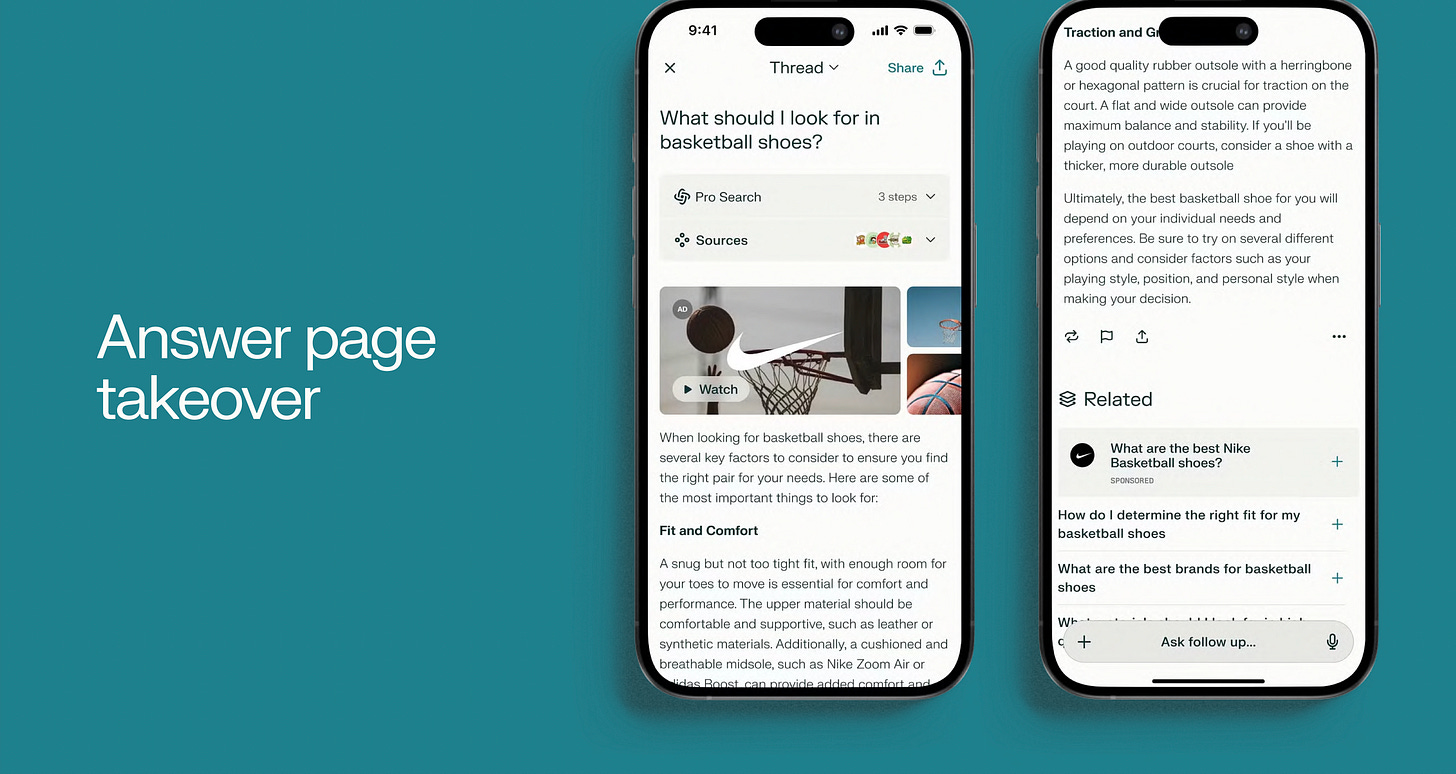Not Everything Needs to Be SaaS: AI's new pricing playbook
Beyond subscriptions: pricing models built for the AI era.
A new product launch by Posha set me off this week.
Welcome to my rant: not everything needs to be a subscription service.

Meet Posha: a $1,750 countertop robot that cooks meals after you load it with ingredients.
The catch? A $14.95/month membership fee.
Without paying, your pricey kitchen bot is stuck with 50 pre-installed recipes. By subscribing, you unlock:
🔓Unlimited recipes
🔓Custom recipe creation
🔓Importing recipes from the internet
Subscription business models are the obvious choice for start-ups, but there’s a missed opportunity here for Posha:
Instead of charging a SaaS fee, why not create a user-generated content platform of creators creating Posha-friendly recipes? Posha could attract more customers and enable a creator ecosystem, possibly even with revenue-share.
Posha is already experimenting with food delivery integrations: they could negotiate a commission structure from these services instead of punishing consumers with a subscription fee. (Check out outcome-based pricing below).
This got me thinking…does everything need to be SaaS in 2025?
The SaaS Reflex 💸
For the past decade, SaaS has been the default playbook. Investors love it because it means recurring revenue and predictable growth.
So much so that, according to Harvard Business Review, subscription companies have grown 3.7x faster than the S&P 500 index over the last decade.
But here’s the problem:
Consumers are over it. 🥱
I’m over it. 💁♀️
Companies paying for SaaS are over it. 💲
Here’s why:
In 2023, people spent $273/year across 12 subscriptions, according to HBR.
CNBC found we spend $133 more than we realize on forgotten subscriptions
Zylo estimates that 45% of SaaS spend is wasted in organizations of 10,000+ people
Zylo also estimates that even small businesses waste 36% of their SaaS spend
Subscriptions are convenient for businesses, but they’re often a bad deal for customers, who often under-utilize subscription products.
Product Builders: we need to do better. And the good news is, there are new pricing models emerging, built for the AI era.
In this edition, we’ll talk through a few SaaS model fails, and some promising new pricing models to explore in the age of AI.
1) BMW Heated Seats: who owns the car?! 🔥🚗
Physical products are typically the space where subscription fees will get the most backlash.
Who can forget the story of BMW, which tried charging $18/mo to unlock heated seats already installed in the vehicle, but reversed the decision after heavy customer backlash. Consumers felt like they were paying for hardware they already owned.
Why this didn’t work:
The hardware was already installed in the car, and charging a subscription fee for a high-price luxury item feels like BMW is holding the customer’s own car hostage.
What Tesla did instead:
Tesla gives optionality: buy Full Self-Driving (Supervised) for $8,000 or subscribe for $99/mo.
And I seriously wish more tech companies did this: give customers the option between lifetime ownership and the convenience of monthly subscriptions.
2) Eight Sleep: keeping your mattress hostage 🛏️
We now live in a world where even a mattress cover comes with a subscription. If you haven’t heard of the Eight Sleep, it’s essentially designed to keep your mattress cool, and adjust for temperature differences between 2 people sleeping on a bed.
But of course, they had to include a subscription component. 🙄
The hardware costs thousands of dollars, and the subscription fee costs $33/month for the “autopilot” to automatically adjust the temperature of the bed.
While Eight Sleep has built a strong community of supporters including health gurus Andrew Huberman and Bryan Johnson, there’s increasing signals that people love the hardware, but hate the fee.
Someone on Reddit released an app to make Eight Sleep work without the subscription fee. Users are literally trying to jailbreak their mattress.
Customers complaining the mattress is useless without the subscription.
Long threads of subscription-free alternatives.
What Eight Sleep could do instead:
Minimum Ownership Guarantee: temperature control, schedules, and basic alarms remain fully functional offline forever. Membership could sell advanced sleep insights, sleep coaching, and analytics.
3) Skype retired ☎️
Earlier this year, Microsoft retired Skype, forcing customers who once paid for Skype credits to move to a subscription fee model via Teams instead.
That kills the classic pay-as-you-go use case many people relied on for occasional landline or international calls.
And it alienated a huge market of “light users” who only wanted pay-as-you-go, like myself.
This Reddit post summarizes perfectly why consumers are revolting against subscription products: inflation is real and consumers can’t justify additional subscriptions.
And guess what? ZippCall swooped in to serve this exact niche. And the whole product was built in 4 days. Take that, Skype.
So here’s my breakdown on when SaaS works, and when it doesn’t.
When SaaS Works ✅
Unlocking access customers couldn’t own themselves (Netflix, Spotify)
Delivering powerful tools businesses can’t maintain alone (Salesforce, Figma)
When SaaS Fails ❌
Locking features inside hardware customers already bought (ownership violation)
Making products barely usable without an ongoing fee (hostage vibes)
Ignoring casual/occasional users who just want per-use pricing
New AI-enabled pricing models ✨
SaaS isn’t dead. But it’s no longer the only pricing model in town. AI is pushing pricing models into new territory. Here are 6 models you’ll start seeing more of:
1. Usage-Based
Pay only for what you consume. This emergent pricing model is natural for the world of AI, where every API call and prompt has an associated compute cost.
Example: DeepGram charges per 1k characters (text-to-speech), per minute (voice-to-text), or per minute for access to their voice agent API.
❌ Problem: revenue is less predictable.
💡The Fix: tiered models: DeepGram offers pay-as-you-go usage for light users, or $4K/year prepaid enterprise plans with credits redeemed against actual usage.
2. Token-Based
Pay for credits to redeem for actions (a flavour of usage-based).
Example: Leonardo AI assigns tokens per subscription tier, which allow you to generate a certain number of images per month.
❌ Problem: tokens can feel abstract and confusing.
💡 Fix: Make it real for users what one token equates to. Eleven Labs translates tokens into meaningful value by converting tokens into approximate minutes of text-to-speech translation.
❌ Another problem: users hate wasting tokens.
💡 Fix: I’d love to see the industry offer pay-as-you-go tokens instead of “use it or lose it”, or allow tokens to rollover to the following month.
3. Results-Based
Pay for results or outputs, not seats. This flips pricing on its head: you’re paying for value delivered.
Example: Fin AI chatbot charges $0.99 per resolution. A resolution = confirmed by the customer. (Side bar: Fin AI calls this “outcome-based”, but I’ll argue their model is results-based because outcome-based should target a much broader business objective, like revenue or CSAT.)
❌ Problem: aligning on the right outcome to pay for can be difficult.
💡 Fix: start with simple value-add use cases like questions/cases resolved, meetings booked.
4. Outcome-Based
Pay for real business results like revenue or cost efficiencies.
These models are still nascent, but Fin AI, Decagon, and Chargeflow are starting to lead in this area, although I’d argue they’re still stuck in results-based metrics like “meetings set up” or “tickets handled”. The future of outcome-based is customers paying for real, tangible business results:
Example: consulting or agency contracts tie payments to KPIs achieved like profitability delivered or cost efficiencies gained.
Back to Posha the chef robot, this could mean Posha gets paid a commission on every Uber Eats delivery it brokers.
Imagine: Perplexity’s browser agent gets a commission every time it recommends a product you buy.
❌ Problem: results can be difficult to attribute.
💡Fix: These business models will have to build or partner with E2E tracking & attribution solutions.
5. Ad-Supported (Reinvented with AI)
This model is as old as the internet itself, but with a new twist: the prompt someone enters can be used to create a rich customer profile and display targeted ads based on buying intent.
Example: Perplexity’s leaked pitch shows how AI agents could serve hyper-personalized ads based on browsing context and buying intent.
❌ Problem: right now, ad-supported models for AI products are fairly nascent.
💡Fix: watch this space for new bidding models for AI products. Google published an exploration where brands bid to shape the response of the LLM, whereas Perplexity’s leaked pitch suggests advertisers will pay for placement within an LLM response.
6. Agent-Based
This one may be the most controversial of them all: AI products being sold on a per-agent basis as if they were full-time employees.
Think about that: instead of paying for the number of humans using the software, companies could pay for the number of agents working for them.
The unsettling part about this pricing model is that it’s priced intentionally to be compared to a human salary.
Example: AiSDR provides an outbound sales agent to make cold calls and send emails that costs $900/month.
❌ Problem: The value delivered may not match the monthly fee.
💡Fix: My prediction is this model will begin to shift towards aligning pricing to results or outcome-based pricing like leads generated or meetings set up.
What Product Builders Need to Know 🚀
Don’t default to SaaS. Ask: is this truly win-win for business and the customer?
Give customers options. One-time purchase, pay-for-play, pay-for-results, and subscription can coexist.
Align pricing with value delivered. AI-native products enable you to align pricing to outcomes and results more efficiently than past products. Usage, results-based, outcome-based, agent-based and AI ad-supported are the new frontier.
Final Thoughts:
SaaS worked for the last decade because it made investors rich.
In the next decade, I’m convinced that customers will demand fairness & flexibility, and AI will enable a whole new era of win-win pricing models.
💬 How are you thinking about your product’s pricing in the AI era?











your insights are spot on,,,, the ai era is pushing us to move beyond one-size-fits-all subscriptions. many founders are experimenting with hybrid models: usage-based, outcome-based, and optional subscriptions, giving customers flexibility while aligning pricing with real value delivered. love how you framed fairness and adaptability as the new frontier.